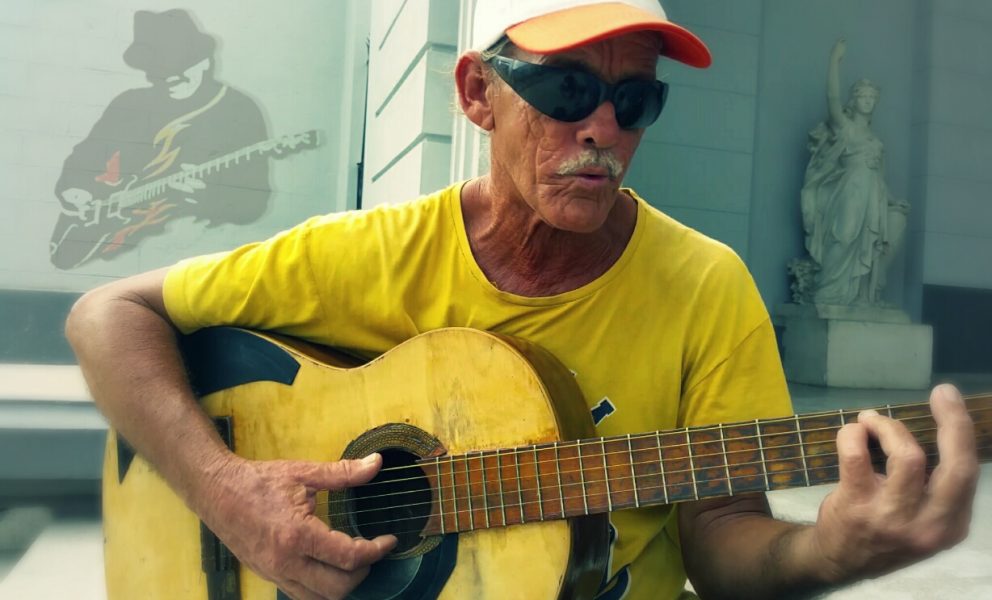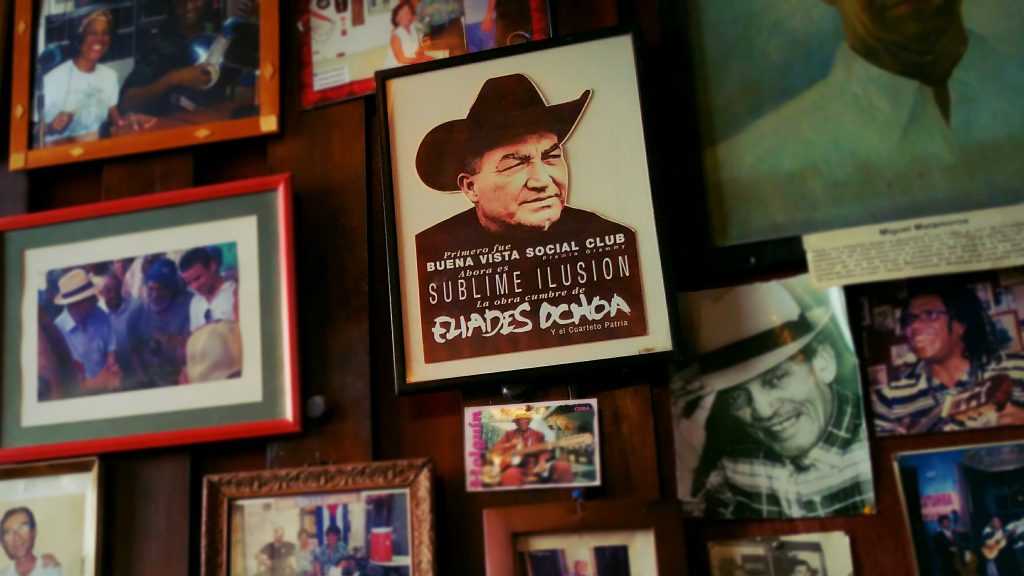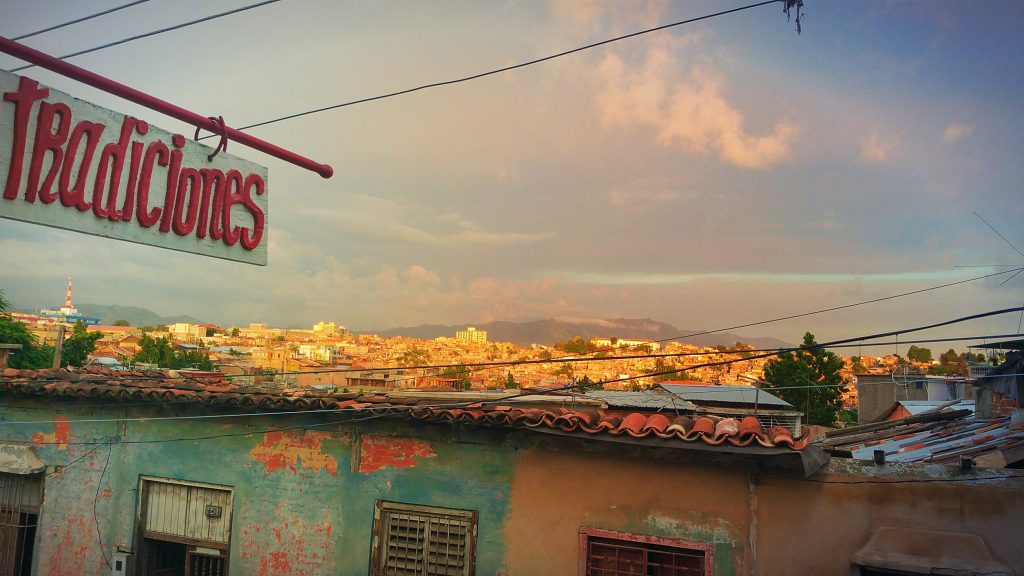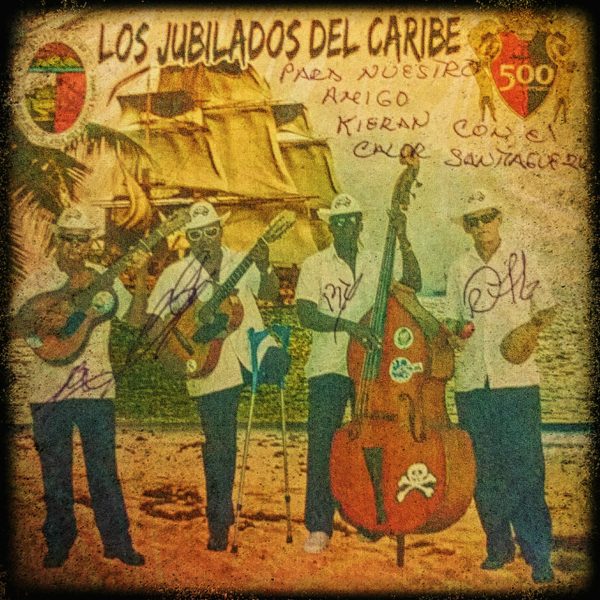Introduction to Son with Xiomara Vidal
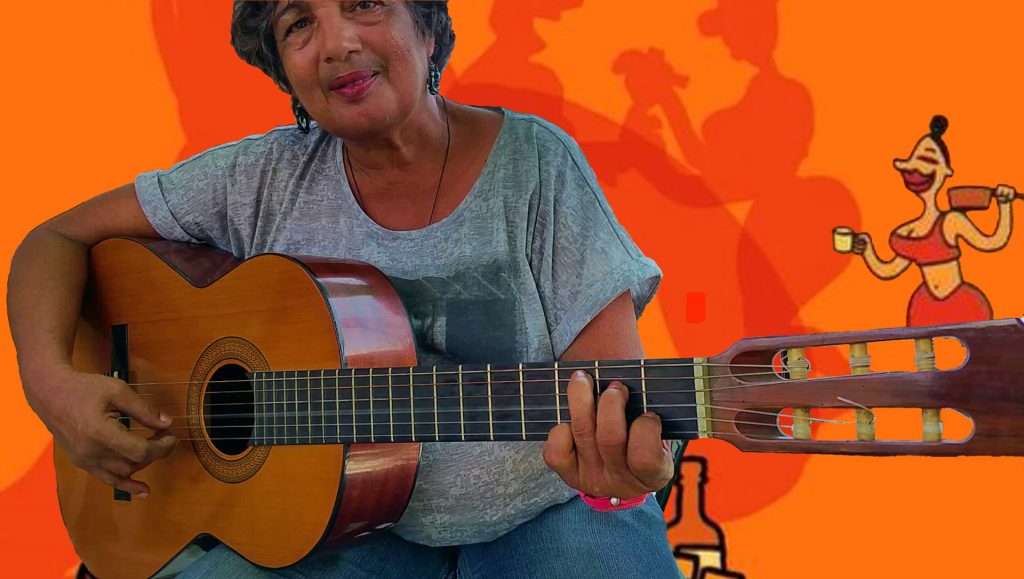
[vc_row][vc_column][vc_column_text]
After beginning at the shallow end of the Cuban genre pool with an introduction to the bolero, I’m now going to attach my musical arm bands and doggy-paddle off towards the deep end.
With the Casa del Queso slowly filling up, Xiomara is going to introduce me to the Cuban son genre.
[/vc_column_text][vc_column_text]
Cuban son bands are renowned throughout Latin America for their technical prowess. If I can crack the code to the Cuban son, it would be a big leap onto a key stepping stone across the Latin American genre pool.
[/vc_column_text][vc_row_inner][vc_column_inner width=”1/2″][vc_custom_heading text=”‘If Cuban music has a spine, it is the son.’
—Alexis Baxter” font_container=”tag:h3|text_align:center” google_fonts=”font_family:Lobster%3Aregular|font_style:400%20regular%3A400%3Anormal”][/vc_column_inner][vc_column_inner width=”1/2″][vc_custom_heading text=”‘The dead go to heaven, the living keep dancing the son.’
—Miguel Matamoros” font_container=”tag:h3|text_align:center” google_fonts=”font_family:Lobster%3Aregular|font_style:400%20regular%3A400%3Anormal”][/vc_column_inner][/vc_row_inner][vc_row_inner][vc_column_inner][vc_column_text]
The son is an instrumental music, a song and a dance. It was developed in Cuba’s rural East, eventually spreading its tentacles throughout Latin America and the world.
It became the key ingredient in the reshaping and rebranding of Cuban and Puerto Rican music in the US as salsa.
Salsa took the world by storm in the 1970s, through artists such as the Fania All-Stars. It brought about an international revolution in music and dance which endures to this day.
But despite its infectiousness, Western musicians and dancers alike find it very challenging to connect with its offbeat polyrhythms consistently and convincingly.
Let’s take a look at the cultural roots of this enigmatic style.
[/vc_column_text][vc_separator color=”green”][/vc_column_inner][/vc_row_inner][/vc_column][/vc_row][vc_row][vc_column][vc_custom_heading text=”Son Cubano” font_container=”tag:h1|text_align:center” use_theme_fonts=”yes”][vc_custom_heading text=”A Cultural Fusion” font_container=”tag:h2|text_align:center” google_fonts=”font_family:Lobster%3Aregular|font_style:400%20regular%3A400%3Anormal”][vc_column_text]
Son is the product of a unique cultural fusion, having its origins in the slave trade.
Some might describe the son as the perfect blend of the African polyrhythms, Spanish guitar traditions, and European harmony. I guess broadly speaking that’s true, and is what a rookie’s ear will hear.
However, that generalisation would underplay, amongst other things, the great vocal traditions of West Africa, the great rhythmic diversity in Spanish music, Gypsy influences on Spanish music itself, and the largely undocumented contribution of Cuba’s indigenous people.
The indigenous Siboney, Taíno, Guanajatabibe and Calabar tribes were decimated by colonisers, and this has made it difficult to measure their influence upon the son. However, some indigenous tribes survived in rural areas around Santiago de Cuba. This is the area where so many early son pioneers would emerge, such as Sindo Garay & Lorenzo Hierrezuelo, who were descendants of ‘Indo-Cubans’. And, it is generally agreed that some son percussion instruments are of indigenous origin.
[/vc_column_text][/vc_column][/vc_row][vc_row top_margin=”0″ bottom_margin=”0″ css=”.vc_custom_1456873052142{margin-top: 15px !important;}”][vc_column][vc_column_text]
The nature of slavery in Cuba differed to that in other parts of the Americas. This different set of circumstances will have contributed towards the trajectory that Cuba’s music has taken:
- Drumming amongst African slaves was allowed, unlike in North America. The Spanish had allowed them to form cabildos (fraternal mutual aid societies / brotherhoods), which helped preserve such cultural traditions.
- Cuba maintained the longest continuous link to Africa via the slave trade for 4 centuries, longer than any other country in the Americas.
[/vc_column_text][vc_column_text]
Slavery in Cuba was ‘officially abolished’ in 1886 and a period of further development of the son followed. Perhaps an increase in integration helped this development along.
As with many political issues surrounding Cuba, there seems to be a difference of opinion over the level of racial tolerance and equality in Cuba today. Personally, it has been refreshing to experience the ease and playfulness with which the Cubans can refer to each others skin tone, without any sense of the ‘political correctness’ that plagues the West.
[/vc_column_text][vc_column_text css=”.vc_custom_1600825124218{padding-top: 3px !important;padding-right: 3px !important;padding-bottom: 3px !important;padding-left: 3px !important;background-color: #ffffff !important;border-radius: 10px !important;}”]
“Latin Americans are more straightforward about physical appearance in general, and nicknames that would be considered racist or of a mocking nature or in many English-speaking countries simply represent a recognition of physical reality in much of Latin America.”
Culture Shock Cuba: A Survival Guide to Customs and Etiquette
[/vc_column_text][vc_separator color=”green”][/vc_column][/vc_row][vc_row top_margin=”0″ bottom_margin=”0″ css=”.vc_custom_1457055264334{margin-top: -45px !important;}” el_id=”La Negra Tomasa”][vc_column][vc_custom_heading text=”Cycling Through the Son” font_container=”tag:h1|text_align:center” use_theme_fonts=”yes” css=”.vc_custom_1480277306537{margin-top: 0px !important;}”][vc_custom_heading text=”‘La Negra Tomasa'” font_container=”tag:h2|text_align:center” google_fonts=”font_family:Lobster%3Aregular|font_style:400%20regular%3A400%3Anormal” css=”.vc_custom_1592928834428{margin-top: 0px !important;}”][vc_column_text css=”.vc_custom_1600826029076{margin-bottom: -10px !important;}”]
Xiomara grabs my attention with a customary “entonces” (“right then”), in her inimitable Cuban twang. The next song we’ll be studying is a Cuban son standard she calls ‘Bilongo’ (‘Bewitched’).
It is sometimes referred to as ‘Mandinga’ (an ethnic group in West Africa), but is best known as ‘La Negra Tomasa’, which translates roughly as The Dark-Skinned Tomasa, but that doesn’t have quite the same ring to it now, does it.
This song is very popular across Latin America, having been covered 100s of times. It was written in 1936 by Guillermo Rodriguez Fiffe, a singer, guitarist and composer form Holguín, Cuba. He had worked with Rosendo Ruiz Suárez, a disciple of ‘The Father of Trova’, Pepe Sanchez. And so, he became another link in the chain which has preserved the trova tradition through the generations.
As Xiomara introduces the song to me, a tres guitar player from the Casa del Queso‘s resident son band arrives, greets her and joins the onlookers. No pressure then.
As with the previous song, Xiomara will perform it first with her backing singer and I’ll watch her like a hawk, or a rabbit in the headlights.
[/vc_column_text][vc_empty_space height=”16px”][vc_message message_box_color=”white” icon_type=”pixelicons” icon_pixelicons=”vc_pixel_icon vc_pixel_icon-play”]Here is a later recording of Xiomara performing the track at Hostal Girasol.
One of the friendly cooks at the hostel, María, is Xiomara’s sister-in-law. You can hear her in the background singing along as she dances in the kitchen.[/vc_message][vc_video link=”https://youtu.be/EYkYdq0E1YU”][/vc_column][/vc_row][vc_row top_margin=”0″ bottom_margin=”0″ el_id=”syncopation”][vc_column width=”1/2″][vc_row_inner][vc_column_inner][vc_column_text]
Feet are now tapping at the Casa del Queso.
I can see that the chords are not complicated but there is a big difference in terms of their timing, relative to standard western music.
The son is rhythmically complex with a high level of syncopation.
[/vc_column_text][/vc_column_inner][/vc_row_inner][vc_custom_heading text=”What is Syncopation?” font_container=”tag:h2|font_size:18|text_align:center” google_fonts=”font_family:Lobster%3Aregular|font_style:400%20regular%3A400%3Anormal”][vc_column_text css=”.vc_custom_1592816684505{background-color: rgba(0,0,0,0.18) !important;*background-color: rgb(0,0,0) !important;border-radius: 5px !important;}”]
Syncopation techniques are a collection of rhythmic sleights of hand. Sometimes they are used intentionally, and at others times instinctively.
The trick works by varying the position of rhythmic stresses (or accents) to avoid regular, predictable patterns. It’s the subversion of the expected beat.
A syncopated rhythm can elicit a physical response from the body. Its victims feel an urge to move to compensate for delayed, pre-empted or missing accents.
Cuban music’s infectious danceability owes a lot to its high level of well-crafted syncopation. And, with the mastery of this dark art, comes the power to invoke mass boogying on a global scale.
[/vc_column_text][/vc_column][vc_column width=”1/2″][vc_column_text]
As we continue to run through the track, Xiomara is giving me lots of information but I’m finding her Cuban accent (and Spanish in general) to be just as challenging as the timing of the chords. We turn to focus on the breaks in the song (0:38, 1:00, 1:10, 2:45).
In between trying to work out where the guitar comes back in after the breaks, and then giggling because I missed it again, I am reminded of The Backwards Brain Bicycle.
In this documentary, a man was challenged to ride a bicycle with the action of its handlebars reversed. Turning left moves the bike to the right, and vice versa. It was not as easy as it may have first seemed. He became dedicated to testing how quickly his brain could ‘unlearn’ his instinct, which had been hard-wired from an early age.
Like most other people, I found it hilarious watching him wobbling off course no sooner than he had started. But now the shoe is very much on the other foot, as the Casa del Queso‘s resident tres player politely tries to contain his laughter towards my stuttering efforts.
Keeping track of the beat in this solo trovador setting is difficult. Perhaps in a full band setting, with a bassist and percussionists, there will be clearer rhythmic reference points. Or is that just wishful thinking?
[/vc_column_text][/vc_column][/vc_row][vc_row][vc_column][vc_column_text]Overall, I get the gist of the song and Xiomara is impressed. She says the chord timing will come with practice.
I’ve suffered some minor bruising falling off my musical bicycle, but it’s time to brush off the dust and get back on.
Next, we’re going to wobble our way down a musical dual carriageway, combining bolero and son …into a fusion.
Hmm, how’s that going to work? Surely you need a license for that?[/vc_column_text][/vc_column][/vc_row][vc_row top_margin=”0″ bottom_margin=”0″ css=”.vc_custom_1457068709118{background-color: rgba(0,0,0,0.18) !important;*background-color: rgb(0,0,0) !important;border-radius: 3px !important;}”][vc_column][vc_row_inner][vc_column_inner][vc_custom_heading text=”Further Listening” font_container=”tag:h1|text_align:center” use_theme_fonts=”yes” css=”.vc_custom_1454561839075{margin-top: 0px !important;}”][/vc_column_inner][/vc_row_inner][/vc_column][vc_column][vc_row_inner][vc_column_inner width=”2/3″][vc_video link=”https://youtu.be/V-6vqC5V6zk” title=”Compay Segundo’s Version…”][/vc_column_inner][vc_column_inner width=”1/3″][vc_column_text]
Here’s Compay Segundo’s fantastic version of ‘La Negra Tomasa’.
In contrast to Xiomara’s version as a solo trovadora, here you can hear the song supported by:
- double bass
- clave
- maracas
- congas
- cowbell
- clarinets
[/vc_column_text][/vc_column_inner][/vc_row_inner][vc_column_text css=”.vc_custom_1457069040832{margin-top: -20px !important;}”]
There’s a different feel to the final section with the cowbell adding momentum and the backing singers allowing the complete fulfilment of the Call-and-Response.
The refrain ‘quiquiribú, Mandinga‘ is of African origin. Mandinga is an African ethnic group, from which many Cubans originate. According to Spanish language sources online, quiquiribú appears to be connected with loss, or even death. Perhaps having a similar meaning to the English expression ‘kicked the bucket’. However, in this context, I think it is referring to the end of the relationship as opposed to her life!
[/vc_column_text][/vc_column][/vc_row][vc_row top_margin=”0″ bottom_margin=”0″ el_id=”citations”][vc_column][vc_column_text]¹ La Guitarra en los Ritmos de la Música Popular Cubana | Alexis Baxter | Editorial Letras Cubanas, 2000[/vc_column_text][/vc_column][/vc_row]

